SBC101 case
Headspace: Social innovation for mental resilience
-a case study on how Headspace influences the world and MoH-
Access this link to see better image resolution
-
Introduction- From a social problem in London…
Incorporated in May 2010, Headspace is an English-American online
company, specializing in meditation. It offers guided meditation
sessions and exercises to help users manage stress and anxiety
improve sleep, and build mental resilience.
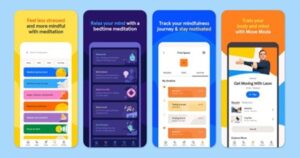
Richard Pierson, 27-year-old Londoner who was devastated as a marketer for an agency, met Andy Puddicombe, a Buddhist monk with 10 years of Tibetan monastic training across Asia. Together, both have revolutionized the way people approach meditation techniques. From a small business events in London, they have shaped it into the first-ranked mediation app peep-reviewed by Journal of Medical Internet Research.(Chaykowski, n.d.).
Problem & Root Cause- To a social innovation business for the world
In the instance of Headspace, a well-known meditation software, the obvious issue the company is dealing with stress, focus ability and sleep.
The following will explore the path to which Headspace applied when designing their app.
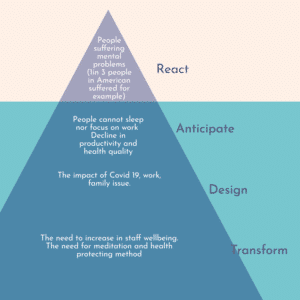
Mission statement & orientation -Lessons & Implication
Mission statement: The mission of headspace is to provide the health and happiness of the world through meditation and mindfulness. Improving mental health and well-being, reducing stress and anxiety, enhancing focus and productivity, and fostering greater self-awareness and compassion. Connectivity supports human happiness, individually and as a community, and it comes in all shapes and sizes.
Orientation: Create a connection between the individual and the community. Headspace aims to address systemic challenges in terms of accessibility and related costs. Create a specialized application for mental health care in the most comprehensive, broad and effective way in the world.
Solution – As easy as it seems
Headspace is a meditation and mindfulness app that offers guided meditations, sleep sounds, and other tools to help users reduce stress, improve focus, and boost overall well-being.
Headspace provides the user experience with four main solutions: Meditate, Sleep, Move và Focus. However, if you use Headspace on a web browser, there will only be two features available: meditate and focus.
1.Meditate:
Headspace offers guided meditation sessions, ranging from 3 to 60 minutes long
– Beginning meditation: Category for those who have just entered. Includes courses, videos, basic instructions on concepts, nature, meditation techniques.
– Courses and singles: Includes courses and meditations with instruction across multiple levels.
– SOS: This category is quite useful, for those who are in need of rest and help.
– Timers: This section is for those of you who want to relax but don’t have the time.
– Techniques and Support: core meditation techniques that originate from the Buddhist tradition of Burma and Tibet.
– Group meditation: This feature works in the same way as livestream.

2.Focus:
Focus mode helps people learn to focus emotionally and mentally and has a wide range of genres ranging from sound classified by a variety of topics to songs, video clips, meditation exercises, instruction on how to focus, learn and work.
– Quick focus resets: A variety of breathing methods to be calm, and some videos connected watchers with nature in order to create feelings in the present moment .
– Focus music: Some meditation playlists of well-known people and different types of music genre.
– For work: Meditation music is divided into three main categories: songs for single meditations, improving performance when working from home and commuting. The section concentrates on boosting listeners’ work efficiency.
– For study: Guided courses and songs sorted by study-related activity which help listeners to get rid of distractions easily and concentrate on studying.
– For movement: A wide range of songs used in different stages of exercises: before, during and after engaging in physical activity. Users can listen to these sounds to enhance their performance.
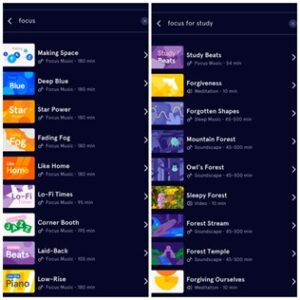
3.Sleep: The app also offers a variety of sleep sounds that help users fall asleep more easily or get a better night’s rest.
– Sleepcast: A combination of calm ASMR (natural sound) and gentle storytelling. The section gives the user a feeling of comfort, relaxation, helping you have a better sleep.
– Wind downs: includes meditations and breathing exercises to prepare the user for a full sleep.
– Sleep music: A collection of songs and sounds, sorted in alphabetical order based on the title. Users can listen while asleep to improve sleep quality.
– Kids and Parents: This section is for children with little stories, meditations and guidelines to help them sleep better.
-Eve’s guide to sleep: includes procedures to enhance and improve sleep throughout the day.
– Night time SOS: Exercises, guidelines for users when facing problems that cause you to wake up in the middle, fall asleep, etc.
– Soundscapes: The natural ASMR audio collection makes it easier for listeners to fall asleep and sleep deeper.
– Sleep radio: This feature is used throughout your sleep (8 hours). Each content will be a set of sounds, songs of the same genre.
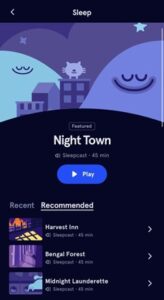
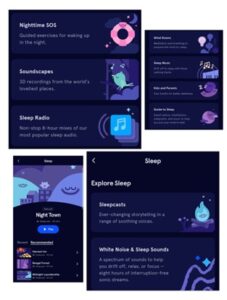
4.Move: Move with the exercise, yoga lasts 20 to 30 minutes from low to moderate intensity.
– Lincoln center dance breaks: Engaging mind and body with different forms of dance.
– Mindful cardio: Different types of audio lasting from 10-20 minutes to get the heart rate up. Some runners or joggers can choose a suitable audio depending on their pace.
– Get moving with Kim/ Leon: A 28-day series of exercises for beginners with trainers. Not only do these exercises help watchers shape their bodies but also develop their self-discipline in daily life.
– Rest day meditations: Exercising the mind, showing gratitude, finding balance after a tiring day with different instructions. There are also some meditations and courses for sports lovers.
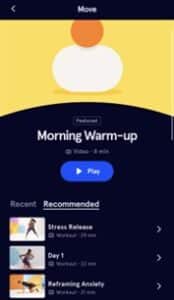
Business Model – Smart way to produce money
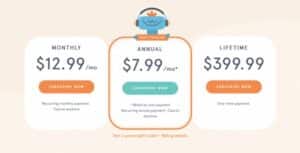
-
subscription-based business model: provides access to meditation and mindfulness exercises through its mobile application and website
-
Free Premium model: offers a free trial period through consumer app, after which users can choose to sign up for a monthly or annual subscription (productmint, 2019).
-
B2B solutions business model: partners with organizations to provide corporate wellness programs and content, generating additional revenue streams
-
Prices are not publicly disclosed and are most likely based on the size of the contract
-
Some of its corporate partners include the likes of Adobe, Airbnb, and Spotify.
-
Headspace Health (on approval process)
-
plans to deliver the world’s first prescription meditation app
Market – How Headspace capture the world
1. Market size
a. TAM (Total Available Market)
Total market for meditation and mindfulness services: $2.9 Billion
b. SAM (Serviceable Available Market) the portion of the meditation and mindfulness apps:: 1.1B
c. SOM (Serviceable Obtainable Market)
The portion of the SAM that Headspace can realistically capture and maintain: 4,8M
(Curry, 2020)
2. Competitors
According to the Newyork times (Blackwell, 2020), Headspace unsurprisingly ranked first among those on the marketing, due to distinct approach to content, visual design with generous user support terms; a straight forward user flow.
Growth strategy- From small to big
-
Marketing
-
Target:
-
Reach a wider audience.
-
Boost brand awareness
-
Strategy
-
Content marketing: using advisable, engaging and informative content about meditation, mindfulness, and mental health to reach multiple audiences.
-
Using videos, podcasts, and social media content to promote mental health wellbeing for the community.
-
Influencer marketing: Collaborating with influencers to advertise for its product (in 2020, Headspace partnered with LeBron James to create a series of meditations)
-
Partnership marketing: likewise the company collaborated with other companies or organization to promote the apps (NBA, Kaiser Permanente)
-
Advertisements: using paid advertisement to enhance brand awareness.
-
Product development
Headspace has consistently expanded its product offerings beyond its core meditation app. For example, in 2018 the company launched Headspace for Kids, which offers age-appropriate meditation exercises for children. Headspace has also developed partnerships with companies like Nike, offering guided meditation exercises for athletes.
-
International expansion
Headspace has expanded its reach globally, offering localized content and translations in multiple languages.
Readiness- It can’t be help without
1, Product:
Headspace offers online guided meditation materials that are available to customers through the company’s website and a mobile app for the iPhone and Android operating systems. Users receive access to ten days of free content before having to decide whether to sign up for a monthly or annual membership or keep using the free trial content.
In addition, Headspace released its platform’s second edition in 2014. When users have finished the Foundation stage of the app, the content in version 2 of the app focuses on four areas: health, performance, relationships, and Headspace Pro. Before going on to a more difficult phase of the software, users are encouraged to finish and master a level of meditation via gamification. Each session lasts around 10 minutes and is often an audio file.
Headspace removed its voice-activated applications for Google Home and Alexa smart speakers in 2022.
2, Research:
A number of clinical experiments examining the benefits of mindfulness training have made use of Headspace. In one such study, researchers from UCL, supported by the British Heart Foundation, investigated the effect of mindfulness on workplace stress in two significant multinational firms, utilizing the Headspace app as the intervention. The study discovered a significantly higher level of well-being, lower levels of anxiety and depressive symptoms, lower levels of diastolic blood pressure, higher levels of felt job control, and lower levels of sleeping issues.
3, Media:
The Today Show, BBC Breakfast News, ABC News, and The Dr. Oz Show are just a few US and UK television programs discussing Headspace.
The Headspace app was used to investigate the effectiveness of mindfulness over 8 weeks in the BBC Two science program Horizon. Dr. Michael Mosley, the speaker, was shown to have a considerably lower pessimistic viewpoint in lab trials. He also claimed to have won his ten-year fight with sleeplessness. Additionally, the product has been discussed on NPR and in US publications like Martha Stewart.
Moreover,The inventor of Headspace, Andy Puddicombe, presented a TED Talk in November 2012 titled “All It Takes Is 10 Mindful Minutes” that discussed the advantages of scheduling daily mindfulness exercises.
4, Downloads & Rating:
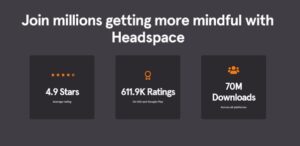
The application has received greatly positive feedback from its users. In the 70 million downloads and from the 611.9 thousand ratings, its average star rating remains 4.9, a very high score. This shows that Headspace is effective in resolving users’ pain points in mental health.
5. Awards
Headspace is a popular mindfulness and meditation app that has received numerous awards. In 2022, Headspace won the Mindful Workplace Awards by bringing real innovation and passion to helping people improve their mental well-being and overall health. (Headspace, n.d.)
Typology of social entrepreneurship
Headspace is designed to suit as a Social Constructionist, based on these following reasons.
Its ultimate goal is allocate sufficient resource and personnel to improve people’s mental health, which is a urgent problem only deepens after the Covid 19 pandemic (WHO, 2022)
The app offers guided meditations, mindfulness exercises, and other tools to help users manage their emotions and cope with daily challenges. By addressing these issues, Headspace is working to reduce the stigma surrounding mental health and promote a more positive and accepting attitude towards mental illness. The many governments failed to achieved this or not sufficient attempted has been witnessed to uprooted the issue.
Conclusion
Headspace is a creative, accessible yet simple and effective solution to a common problem: to reduce mental health issue through meditation and other already built-in feature, which hasn’t been seriously addressed in many countries. With its power dominating Netflix’s interactive game, Headspace has prove its immersive potential using technology, smart marketing strategy, easy-going app design to make the societal life a better place, while generating profits to support further mediation features in the future.
Bibliography
BBC. (n.d.). BBC Two – Horizon, 2022, How to Sleep Well with Michael Mosley. [online] Available at: https://www.google.com/url?q=https://www.bbc.co.uk/programmes/m0015y9l&sa=D&source=docs&ust=1682853522722757&usg=AOvVaw1WyodSRaYh2YrgEAyNZbdB [Accessed 30 Apr. 2023].
Blackwell, C. (2020). The Best Meditation Apps. The New York Times. [online] 24 Mar. Available at: https://www.nytimes.com/wirecutter/reviews/best-meditation-apps/.
productmint. (2019). The Headspace Business Model – How Does Headspace Work & Make Money? [online] Available at: https://productmint.com/the-headspace-business-model-how-does-headspace-make-money/.
Chaykowski, K. (n.d.). Meet Headspace, The App That Made Meditation A $250 Million Business. [online] Forbes. Available at: https://www.forbes.com/sites/kathleenchaykowski/2017/01/08/meet-headspace-the-app-that-made-meditation-a-250-million-business/?sh=7114b4181f1b.
Can we change how we deal with stress? (n.d.). BBC News. [online] Available at: https://www.bbc.com/news/av/health-12295702 [Accessed 30 Apr. 2023].
Curry, D. (2020). Headspace Revenue and Usage Statistics (2020). [online] Business of Apps. Available at: https://www.businessofapps.com/data/headspace-statistics/.
wearewip.com. (n.d.). How Headspace Became a $320 Million Brand with Great App & UI Design. [online] Available at: https://wearewip.com/blog/how-headspace-became.
Clinicaltrials.gov. (2012). A Randomised Controlled Trial to Investigate the Effects of a Mindfulness Smartphone App on Well-being in the Workplace – Full Text View – ClinicalTrials.gov. [online] Available at: https://clinicaltrials.gov/ct2/show/NCT01661569 [Accessed 4 Nov. 2019].
Hayden, E. (2014). Dr Oz: Power Of Zen + Holy Basil Tea & Headspace App Review. [online] Recapo. Available at: https://www.recapo.com/dr-oz/dr-oz-advice/dr-oz-power-zen-holy-basil-tea-headspace-app-review/ [Accessed 30 Apr. 2023].
Johns Hopkins Medicine. (n.d.). Mental Health Disorder Statistics. [online] Available at: https://www.hopkinsmedicine.org/health/wellness-and-prevention/mental-health-disorder-statistics#:~:text=An%20estimated%2026%25%20of%20Americans.
Puddicombe, A. (2013). All it takes is 10 mindful minutes | Andy Puddicombe. YouTube. Available at: https://www.youtube.com/watch?v=qzR62JJCMBQ.Psych Central. (2022). Headspace App Review: Features, Cost, and More. [online] Available at: https://psychcentral.com/reviews/headspace-app-reviews#_noHeaderPrefixedContent.
TechCrunch. (n.d.). Headspace Releases New Version Of Its Meditation Platform. [online] Available at: https://techcrunch.com/2014/05/30/headspace-releases-new-version-of-its-meditation-platform/.
WHO (2022). “WHO highlights urgent need to transform mental health and mental health care”. [online] www.who.int. Available at: https://www.who.int/news/item/17-06-2022-who-highlights-urgent-need-to-transform-mental-health-and-mental-health-care.

